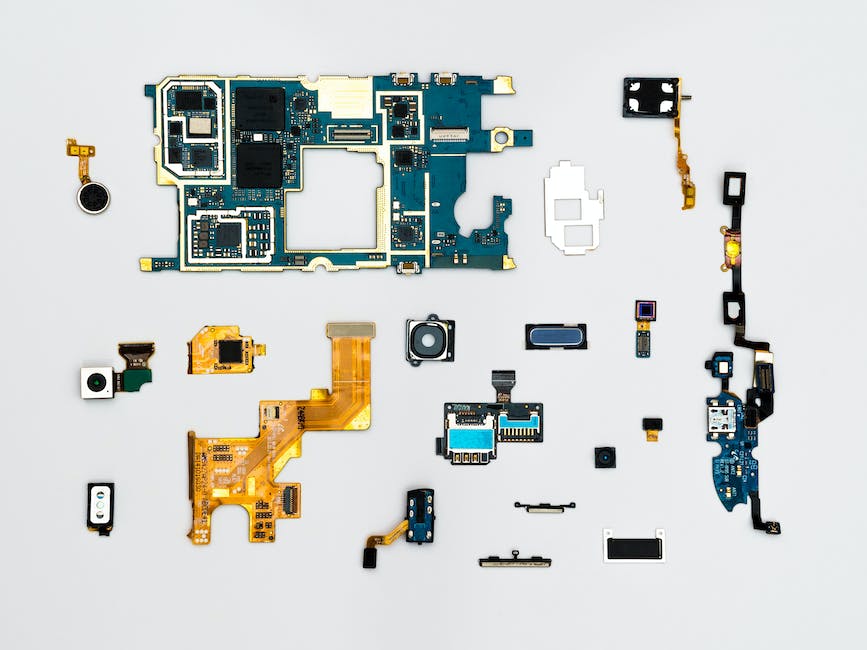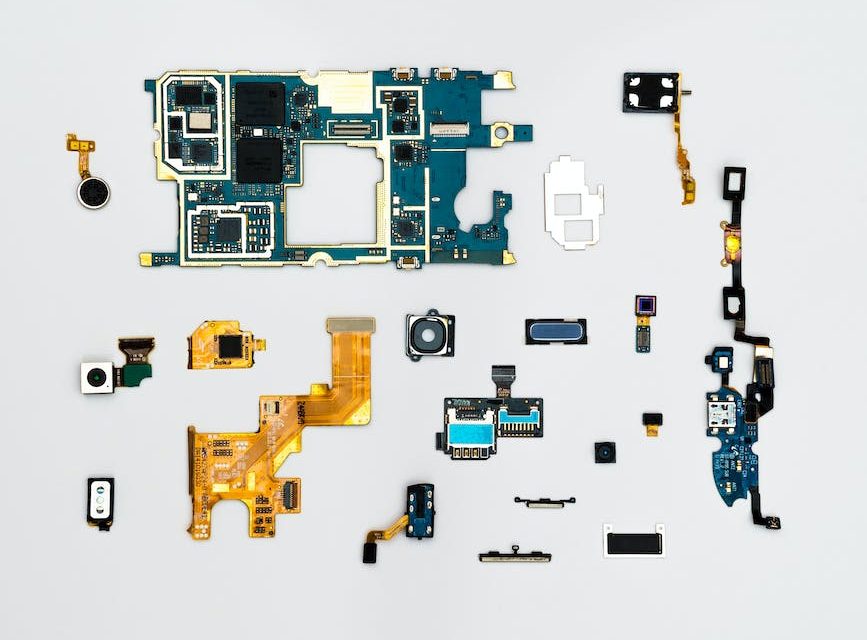Table of Contents
Empowering Special Needs Education through Technology.
Introduction
Introduction:
Leveraging technology for special needs education has become increasingly important in recent years. Technology has the potential to revolutionize the way we educate and support individuals with special needs, providing them with new opportunities for learning, communication, and independence. By harnessing the power of technology, educators and caregivers can create inclusive learning environments that cater to the unique needs of each individual, enabling them to reach their full potential. In this article, we will explore the various ways in which technology can be leveraged to enhance special needs education and the benefits it brings to both students and educators.
The Role of Assistive Technology in Special Needs Education

Leveraging Technology for Special Needs Education
The Role of Assistive Technology in Special Needs Education
In recent years, technology has become an integral part of our daily lives, transforming the way we communicate, work, and learn. This transformation has also extended to the field of education, particularly in the realm of special needs education. Assistive technology, in particular, has emerged as a powerful tool in helping students with disabilities overcome barriers and achieve their full potential.
Assistive technology refers to any device, software, or equipment that helps individuals with disabilities perform tasks that they would otherwise find challenging or impossible. These technologies can range from simple tools like pencil grips and text-to-speech software to more complex devices like communication boards and eye-tracking systems. The goal of assistive technology is to provide students with the necessary support to participate fully in the learning process and to bridge the gap between their abilities and the demands of the curriculum.
One of the key benefits of assistive technology is its ability to enhance communication skills. For students with speech and language impairments, communication boards and speech-generating devices can serve as a means of expressing themselves and engaging in meaningful conversations. These tools not only facilitate communication but also promote social interaction and inclusion, allowing students to connect with their peers and teachers on a deeper level.
Another area where assistive technology has made significant strides is in the realm of reading and writing. For students with dyslexia or other learning disabilities, text-to-speech software and word prediction tools can be invaluable in improving their reading comprehension and written expression. These technologies provide students with the opportunity to access information in a format that suits their individual needs, enabling them to participate more actively in classroom discussions and assignments.
Furthermore, assistive technology has proven to be a game-changer for students with physical disabilities. Mobility aids such as wheelchairs and walkers enable these students to navigate their school environment independently, promoting a sense of autonomy and self-confidence. Additionally, specialized computer interfaces and adaptive switches allow students with limited motor skills to access computers and other electronic devices, opening up a world of possibilities for learning and creativity.
It is important to note that while assistive technology can be highly beneficial, its successful implementation requires careful planning and ongoing support. Educators and parents must work together to identify the specific needs of each student and select the most appropriate assistive technology tools. Training and professional development opportunities should also be provided to ensure that teachers are equipped with the necessary skills to effectively integrate these technologies into their instructional practices.
In conclusion, assistive technology plays a crucial role in special needs education by empowering students with disabilities and enabling them to reach their full potential. From enhancing communication skills to improving reading and writing abilities, these technologies have the power to transform the educational experience for students with special needs. However, it is essential that the implementation of assistive technology is done thoughtfully and with ongoing support to ensure its effectiveness. By leveraging technology in special needs education, we can create a more inclusive and equitable learning environment for all students.
How Virtual Reality Enhances Learning for Students with Special Needs
Virtual reality (VR) has emerged as a powerful tool in the field of special needs education, revolutionizing the way students with disabilities learn and interact with the world around them. By creating immersive and interactive experiences, VR technology has the potential to enhance learning outcomes and provide a more inclusive educational environment for students with special needs.
One of the key benefits of VR in special needs education is its ability to create a safe and controlled learning environment. For students with sensory processing disorders or autism spectrum disorders, traditional classroom settings can be overwhelming and distracting. VR allows educators to create virtual environments that can be tailored to meet the specific needs of each student, providing a calm and focused learning space. This controlled environment helps to reduce anxiety and sensory overload, allowing students to fully engage in the learning process.
Moreover, VR technology enables students with physical disabilities to participate in activities that may have been previously inaccessible to them. For example, students with mobility impairments can use VR to explore historical sites, visit museums, or even travel to different countries, all from the comfort of their classroom. This not only enhances their learning experience but also promotes a sense of inclusion and equality, as they can now participate in activities that were once limited to their able-bodied peers.
In addition to creating inclusive learning environments, VR also offers a wide range of interactive and multisensory learning experiences. Traditional teaching methods often rely heavily on visual and auditory stimuli, which may not be effective for students with learning disabilities or attention deficit disorders. VR, on the other hand, can engage multiple senses simultaneously, providing a more immersive and engaging learning experience. For example, students can manipulate objects in a virtual environment, hear and see the consequences of their actions, and receive immediate feedback, all of which enhance their understanding and retention of information.
Furthermore, VR technology can be used to develop social and communication skills in students with special needs. Many individuals with autism spectrum disorders struggle with social interactions and communication, making it difficult for them to form meaningful relationships and navigate social situations. VR offers a safe and controlled platform for students to practice and develop these skills. Through virtual simulations, students can engage in social scenarios, such as job interviews or group discussions, and receive real-time feedback on their communication and social skills. This not only builds their confidence but also prepares them for real-life social interactions.
While the potential of VR in special needs education is vast, it is important to note that its successful implementation requires careful planning and collaboration between educators, technology experts, and parents. Educators need to be trained in using VR technology effectively and integrating it into their curriculum. Additionally, accessibility features should be considered to ensure that students with visual or hearing impairments can fully benefit from VR experiences.
In conclusion, virtual reality has the potential to revolutionize special needs education by creating inclusive learning environments, providing interactive and multisensory experiences, and developing social and communication skills. By leveraging the power of technology, educators can enhance learning outcomes and provide a more inclusive educational experience for students with special needs. As VR technology continues to advance, it is crucial that educators and stakeholders embrace its potential and work together to harness its benefits for the betterment of special needs education.
Using Artificial Intelligence to Personalize Special Education Programs
Leveraging Technology for Special Needs Education
Using Artificial Intelligence to Personalize Special Education Programs
In recent years, there has been a growing recognition of the importance of personalized education for students with special needs. Each student has unique learning requirements, and it is crucial to tailor educational programs to meet their individual needs. Technology, particularly artificial intelligence (AI), has emerged as a powerful tool in achieving this goal. By leveraging AI, special education programs can be personalized to cater to the specific needs of each student, leading to improved learning outcomes and overall educational experiences.
One of the key advantages of using AI in special education is its ability to collect and analyze vast amounts of data. AI algorithms can process data from various sources, including student assessments, learning materials, and even real-time classroom observations. This data can then be used to identify patterns and trends, allowing educators to gain valuable insights into each student’s strengths, weaknesses, and learning preferences. Armed with this information, teachers can develop personalized learning plans that address the specific needs of each student, ensuring that they receive the support and resources necessary for their academic success.
Furthermore, AI can provide real-time feedback and adaptive learning experiences. Traditional teaching methods often rely on periodic assessments to gauge student progress. However, this approach may not be suitable for students with special needs, as it fails to provide immediate feedback and support. AI-powered educational platforms can offer personalized feedback and adapt the learning experience in real-time based on the student’s performance. This allows students to receive immediate guidance and support, helping them stay engaged and motivated throughout their educational journey.
Another significant benefit of AI in special education is its potential for enhancing communication and collaboration between educators, students, and parents. AI-powered platforms can facilitate seamless communication by providing a centralized hub where teachers, students, and parents can access and share information. This enables educators to collaborate with parents and other professionals involved in the student’s education, ensuring a holistic and coordinated approach to support their learning needs. Additionally, AI can assist in translating complex educational jargon into more accessible language, making it easier for parents to understand and actively participate in their child’s education.
While AI holds immense potential for personalized special education, it is essential to address potential concerns and challenges. Privacy and data security are critical considerations when implementing AI in educational settings. Schools and educational institutions must ensure that appropriate safeguards are in place to protect student data and maintain confidentiality. Additionally, it is crucial to strike a balance between AI-driven personalized learning and the role of human educators. AI should be seen as a tool to augment and support teachers, rather than replace them. The expertise and guidance of educators are irreplaceable in providing the emotional support and empathy that students with special needs often require.
In conclusion, leveraging technology, particularly AI, in special education programs can revolutionize the way students with special needs learn and thrive. By collecting and analyzing data, AI can provide valuable insights into each student’s unique learning requirements. Real-time feedback and adaptive learning experiences ensure that students receive immediate support and stay engaged. AI-powered platforms also facilitate communication and collaboration between educators, students, and parents, fostering a holistic and coordinated approach to education. However, it is crucial to address concerns regarding privacy, data security, and the role of human educators. With careful implementation and consideration, AI has the potential to transform special education and empower students with special needs to reach their full potential.
The Benefits of Online Learning Platforms for Special Needs Students
Leveraging Technology for Special Needs Education
The Benefits of Online Learning Platforms for Special Needs Students
In recent years, technology has revolutionized the way we learn and access information. This is particularly true for special needs education, where online learning platforms have emerged as a powerful tool to support students with diverse learning needs. These platforms offer a range of benefits that can significantly enhance the educational experience for special needs students.
One of the key advantages of online learning platforms is their ability to provide personalized learning experiences. Special needs students often require individualized instruction tailored to their unique learning styles and abilities. Traditional classroom settings may struggle to meet these needs due to limited resources and large class sizes. However, online learning platforms can adapt to the specific needs of each student, offering personalized lessons and activities that cater to their strengths and weaknesses. This personalized approach can greatly improve engagement and learning outcomes for special needs students.
Furthermore, online learning platforms offer a flexible learning environment that can accommodate the diverse needs of special needs students. Many students with disabilities face physical or sensory challenges that make attending traditional schools difficult. Online learning platforms eliminate these barriers by allowing students to access educational materials from the comfort of their own homes. This flexibility not only ensures that students can access education regardless of their physical limitations but also provides a safe and comfortable learning environment that promotes focus and concentration.
Another significant benefit of online learning platforms is the availability of assistive technologies. These technologies are specifically designed to support students with disabilities and provide them with the necessary tools to overcome learning barriers. For example, text-to-speech software can help students with reading difficulties by converting written text into spoken words. Similarly, speech recognition software can assist students with writing difficulties by transcribing their spoken words into written text. These assistive technologies, integrated into online learning platforms, empower special needs students to actively participate in their education and overcome challenges that may have otherwise hindered their learning progress.
Moreover, online learning platforms foster a sense of independence and self-confidence in special needs students. Traditional classroom settings often rely heavily on teacher-led instruction, which can inadvertently create a dependency on the teacher for learning. However, online learning platforms encourage students to take ownership of their education by allowing them to work at their own pace and explore topics of interest. This autonomy not only boosts self-esteem but also promotes critical thinking and problem-solving skills, which are essential for success in the real world.
Lastly, online learning platforms provide a wealth of resources and support for both students and educators. These platforms offer a vast library of educational materials, including videos, interactive games, and virtual simulations, which can be accessed anytime and anywhere. Additionally, online learning platforms often include features such as discussion forums and chat rooms, enabling students to collaborate and connect with peers and educators. This sense of community and support can greatly enhance the learning experience for special needs students, fostering a sense of belonging and motivation.
In conclusion, online learning platforms have emerged as a valuable tool for special needs education. The personalized learning experiences, flexible learning environment, availability of assistive technologies, promotion of independence and self-confidence, and access to resources and support make these platforms an ideal choice for special needs students. By leveraging technology, we can create inclusive educational environments that empower all students to reach their full potential.
Q&A
1. How can technology be leveraged for special needs education?
Technology can be used to provide personalized learning experiences, assist with communication and social skills development, offer virtual reality experiences for sensory integration, and provide access to educational resources and tools.
2. What are the benefits of leveraging technology for special needs education?
Benefits include increased engagement and motivation, improved access to educational materials, enhanced communication and social skills development, personalized learning experiences, and opportunities for independent learning.
3. What types of technology can be used in special needs education?
Various types of technology can be used, such as assistive devices, educational apps and software, communication tools, virtual reality systems, adaptive learning platforms, and sensory integration tools.
4. Are there any challenges in leveraging technology for special needs education?
Some challenges include the need for training and support for educators, ensuring accessibility and usability of technology for all students, addressing privacy and security concerns, and the cost of implementing and maintaining technology in educational settings.
Conclusion
In conclusion, leveraging technology for special needs education has proven to be highly beneficial. It has provided opportunities for personalized learning, improved communication and social skills, and enhanced accessibility. Assistive technologies, such as speech recognition software and adaptive learning platforms, have enabled students with special needs to overcome barriers and achieve their full potential. Additionally, technology has facilitated collaboration among educators, parents, and therapists, leading to more effective support systems. Overall, the integration of technology in special needs education has opened up new possibilities and empowered individuals with special needs to thrive academically and socially.





